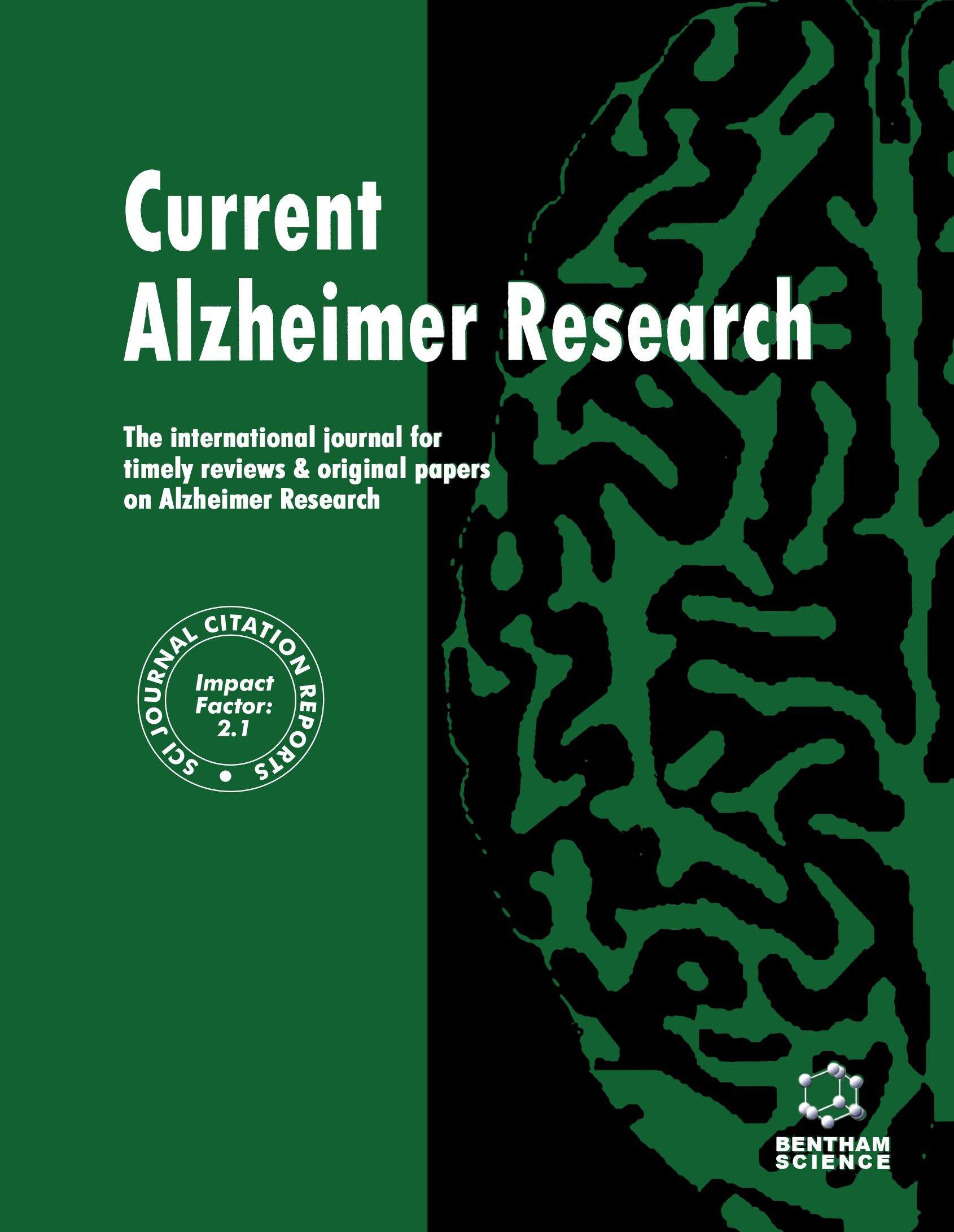-
s Abnormal Clock Gene Expression and Locomotor Activity Rhythms in Two Month-Old Female APPSwe/PS1dE9 Mice
- Source: Current Alzheimer Research, Volume 14, Issue 8, Aug 2017, p. 850 - 860
-
- 01 Aug 2017
Abstract
Background: In addition to cognitive decline, Alzheimer’s Disease (AD) is also characterized by agitation and disruptions in activity and sleep. These symptoms typically occur in the evening or night and have been referred to as ‘sundowning’. They are especially difficult for carers and there are no specific drug treatments. There is increasing evidence that these symptoms reflect pathology of circadian rhythm generation and transmission. Objective: We investigated whether a transgenic mouse model relevant to AD (APPswe/PS1dE9) exhibits circadian alterations in locomotor activity in their home cage and whether expression of clock genes involved in the regulation of the circadian cycle is abnormal in the hippocampus and medulla-pons brain regions isolated from these mice. Results: In 2month old female mice the APPswe/PS1dE9 transgene alters levels and patterns in circadian rhythm of locomotor activity. Expression of the clock genes Per1, Per2, Cry1 and Cry2 was found to increase at night compared to day in wild-type control mice in the medulla/pons. This effect was blunted for Cry1 and Cry2 gene expression in APPswe/PS1dE9. Conclusion: This study suggests altered circadian regulation of locomotor activity is abnormal in female APPswe/ PS1dE9 mice and that this alteration has biomolecular analogies in a widely available model of AD. The early age at which these effects are manifest suggests that these circadian effects may precede plaque development. The APPswe/PS1dE9 mouse genetic model may have potential to serve as a tool in understanding the neuropathology of circadian abnormalities in AD and as a model system to test novel therapeutic agents for these symptoms.


